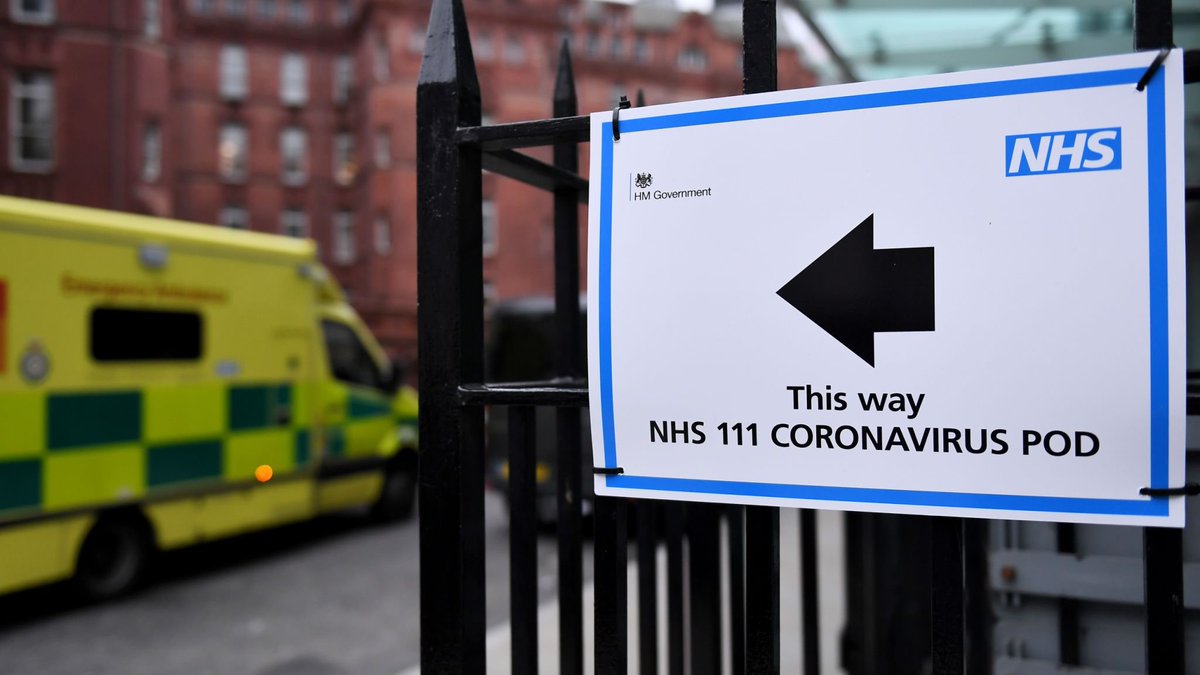The acute medical unit is a temporary hub that serves to bridge the gap between the emergency department and the need for formal admission. In essence, it acts as the temporary hot house for individuals who may not be sick enough to warrant a hospital stay, but still need to be assessed clinically.
Earlier in the past week, and in the very early stages of the U.K.’s COVID-19 epidemic response, one patient had been referred in from their family physician for an urgent review. The onsite senior resident, Adam, had been the doctor to assess them. Symptoms were vague — generally unwell, off food, bit of a cough, possible headache — as was a family history of heart disease and the occasionally reported recurrent urinary tract infections. Bloods were taken, an ECG performed, a chest x-ray done. Viral swabs were taken, because at that time — and with pending updates by the day on managing and protecting against growing COVID-19 cases — pretty much anyone that walked through the hospital door with even a suspicion of sepsis had samples sent off.
So far, so unremarkable. The patient declined painkillers, and ate a shop-bought lunch quietly whilst awaiting an update.
A call from the virology lab came through just before 5 p.m. The nurse in charge, Emily, answered, and showed Adam to the phone. The same patient — with whom he has spent the past five hours in close contact — has tested positive for COVID-19.
To his enormous credit, Adam informed and isolated the patient immediately, ensured all staff had left the area, disinfected himself, donned protective clothing, and took his own viral swabs for confirmation. He cleaned all computers that he has used, and finished typing up his notes in his newly acquired full blue-and-white plastic uniform. He left two hours later than when his shift was due to finish, asymptomatic, knowing that he was not to return to the hospital until a 14-day isolation period was up in accordance with recommended guidelines disseminated at the time for those in direct contact with positive cases. He was the fourth member of the acute medical team in as many days to be subject to the same precautions.
Over subsequent days, all COVID-19 suspect cases were rapidly and collectively moved to a separate area, albeit with only a closed door to shield them from the rest of the unit. Indeed, with no negative pressure rooms anywhere other than the intensive care unit or the dedicated (and overwhelmed) respiratory ward, the measure was arguably futile. The same was true for the resuscitation and Majors areas in the emergency department — taking both triage and assessment before consideration for isolation was made. And even then, the most stringent of attempted infection control measures were and undermined by fundamental practicalities: There just isn’t the space to isolate everyone.
More than anything, it appears to be the constant and changing information which is striking fear into hearts and minds. From my own experience at a grassroots level, I have seen first-hand health care staff to be an incredibly robust bunch, frequently used to dealing with huge upheaval, uncertainty, staffing crises, equipment shortages and infrastructural failings. But is their core values which are now being challenged — patients rushing into the ED with non-infectious emergencies (heart attacks, strokes, psychotic episodes, traumatic injuries) are being subject to longer waits where beds or whole areas are cornered off due to containment issues. Non-urgent cases are being cancelled in surgical theatres and clinics, but the definition of “non-urgent” is also being rapidly reconsidered in wake of an epidemic arrival. What was a fortnight ago a rescheduling of elective operations has now escalated to, essentially, anything that can be avoided if it won’t cause imminent harm. And if greater numbers of hospital staff become symptomatic and have to self-isolate, this burden on resources will only increase exponentially. As just one example, it is anticipated that oncology patients referred under the U.K. two-week wait system will be facing a much more prolonged wait time to see a consultant for assessment of potentially life-threatening disease. The stakes are getting higher by the day.
The confusion also readily abounds beyond my clinical environment — only in recent days has the U.K.’s apparent strategy of pursuing herd immunity to achieve control of epidemic spread been heavily revised. But this is a passively reactive, rather than proactive, approach to containment. And whilst self-isolation remains a highly valid for those working beyond the remit of a clinical environment, containment within the hotbed of an infectious source is both incredibly challenging and frustrating for those workers involved at the forefront — for clinical and non-clinical staff, patients and their families alike. What is urgently needed is physical space — space to isolate suspected and confirmed cases, and away from those with eminently potent health problems unrelated to COVID-19, but for whom co-infection could easily spell disaster. Isolation tents, bays and separate units employed thus far in Wuhan and now Italy need to be urgently adopted in order to stem the proverbially bleeding stump — passive immunity and self-isolation for asymptomatic or non-contact cases alone to protect those most at risk is still simply not enough. Much has already changed within the space of a week, and inevitably much more change is to come: However, irrespective of conflicting or delayed advice from professional bodies, cooperation within and beyond the clinical remit is essential, and this responsibility extends to us all.
Author’s note: All names and patient details have been changed to protect privacy.


